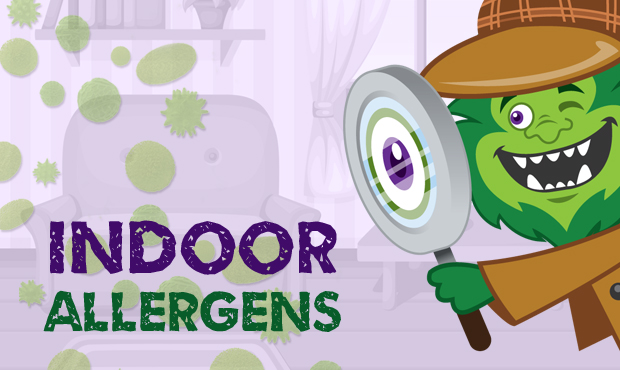
The changing of seasons through autumn and spring are some of the most beautiful times of the year, but for many people with sensitivities, they can also be the most dreaded. If you or someone in your household is often plagued by the sniffling, wheezing, and sneezing that occurs during these peak allergy seasons, there are things you can do to alleviate the symptoms, particularly within the privacy of your home. The air inside our homes can be as much as 100 times more polluted than the air just outside. But it doesn’t have to be. Here are some major components of poor indoor air quality and what you can do to negate them.
Mold and mildew
Mold and mildew are byproducts of home moisture problems. Mold spores are a common allergy trigger that develops when mold is combined with its ideal temperature and nutrients. Mold also produces mildew that can emit particulates that reduce the quality of your indoor air and lead to negative health impacts. But with some fairly simple steps, you can clean up the contaminants and prevent their initial growth.
- Use a bleach solution to kill any visible signs of mold
- Keep moisture prone areas dry, such as underneath your kitchen sink, dry and apply regular disinfecting cleaners.
- Repair any water leaks in plumbing or building materials immediately.
- Consider using a dehumidifier with your HVAC system to control your home’s humidity balance.
Small particulates
A common source of indoor air pollution and allergy triggers is the dust and dirt that regularly get tracked into your home by family members and pets. Dust mites, microscopic spider-like insects, live within dust and can be a major irritant. Common home furnishings, building materials, and household products can also emit particles that can cause respiratory ailments for people with sensitivities. Reduce their impact by:
- Using allergen impermeable or plastic covers over your bed’s box spring and mattress.
- Routinely vacuum any carpets and mats with a HEPA filter.
- Changing or cleaning the air filters in your HVAC equipment once a month.
- Using a damp cloth to dust all of your home’s surfaces once a week.
Weatherization and poor ventilation
Ventilation is something that must go hand-in-hand with proper weatherization techniques. It’s critical for homes to be well-sealed and weatherized to enhance their energy efficiency and keep outdoor pollutants from infiltrating your conditioned indoor environment. Weatherization techniques include installing storm windows, increasing attic and wall insulation, and using caulking and weatherstripping to seal the gaps around doors, windows, and plumbing, electrical, and other exterior-leading penetrations.
Homes that are well-sealed will reduce energy costs and prevent exterior contaminants from entering. However, it is also important to ensure that your home gets a controlled amount of fresh air to improve your indoor air quality. Which is where enhanced ventilation tactics come into play. You can better your home’s ventilation by:
- Replacing the covers on your attic’s soffits with rigid vents. This will allow your attic to get better air circulation without permitting rainwater to get in and cause moisture problems.
- Installing a mechanical ventilation system to work in tandem with your HVAC system.
Every home is different. For a more thorough analysis on your home’s indoor air quality, ventilation, and weatherization, consider scheduling a home energy assessment. In this energy assessment, a professional will walk through your home and use special testing tools to determine where your home is losing the most energy, where potential allergy irritants are being generated, and help you find the best solutions to meet your budget.
For more information about home air improvements, contact us at Wattson Home Solutions today.







